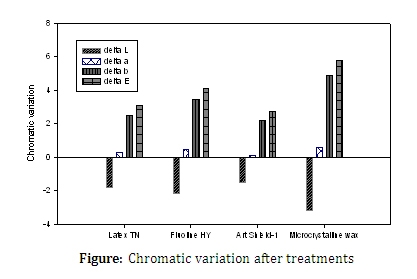Evaluation of four sacrificial anti-graffiti polymers on a highly porous stone substrate
Keywords:
Stone protection, Anti-graffiti, Microcrystalline wax, Paraffin polymers, FluoroelastomersAbstract
Anti-graffiti protection is becoming a common practice in many urban areas, because of increasing danger to buildings and monuments. The main aim of the present study was to evaluate the effectiveness of four commercially available polymeric materials on a very porous stone substrate against graffiti. Physical and chemical properties of the polymers were studied in order to select a class of products able to protect the surface from soiling and to reduce the impact of graffiti on the stone. Experiments were performed on specimens of a very porous bio-calcarenite (Lecce stone, LS), treated with microcrystalline wax (Bresciani, Italy), an emulsion of paraffin polymers (Art Shield-1, C.T.S., Italy), a fluoroelastomer in organic solvent (Fluoline HY, C.T.S.) and a fluoroelastomer in water emulsion (Tecnoflon TN Latex, Solvay Solexis, Italy). Surface properties of treated specimens were evaluated by performing chromatic and gloss variation measurements, optical microscope analysis, water capillary absorption and water vapour permeability tests. In order to examine the anti-graffiti behaviour, treated samples were soiled by a permanent marker and the surface properties studied again after the cleaning.
Colour changes were measured by determining the L*, a*, and b* coordinates of the CIELAB space. The overall chromatic changes (expressed as ΔE*) induced by treatments correspond to colour variations that cannot be detected by naked eye (ΔE* < 5), except for microcrystalline wax, which caused a higher variation (Figure). The most considerable gloss variations were observed on specimens treated with Latex TN and Art Shield-1. Water capillary absorption data indicated that water repellent behaviour of Latex TN was higher than the other polymers. The shielding effect exhibited by the other considered polymers was efficient only in the first few hours of contact with water and then it progressively decreased with increasing time. Water vapour permeability test indicated a considerable reduction of the vapour transmission rate only in the case of Latex TN. It should be noted that a low rate of vapour diffusion represents a drawback for surface treatments of stone.
The anti-graffiti effectiveness was evaluated by measuring colour changes on specimens after the staining/cleaning process. Variations of chromatic coordinates observed on the “cleaned” stones can be ascribed to traces of residual ink and directly correlated to the efficiency of anti-graffiti action. After cleaning of specimens treated with microcrystalline wax or Art-shield-1 very high ∆E* values (≥ 30) were obtained, indicating a poor protecting action of these products against graffiti. Fluorinated polymers exhibited more satisfactory anti-graffiti performance. In fact, after removing ink stains, ∆E* values determined on stone surface were 3 and 10 for Latex TN and Fluoline HY, respectively.

